After a big spike in global e-commerce growth through the pandemic which sectors are consistently winning and which are softening as we near the end of Q3 and the start of the holiday shopping season?
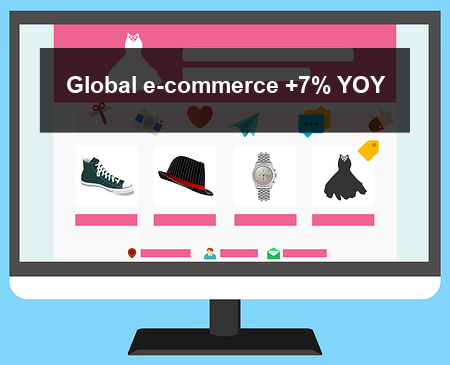
A new report from Nosto analyzes six key e-commerce sectors and shows which industry verticals are ahead as e-commerce sales and traffic level off at the end of Q3 2020 compared with the start of the pandemic.
While e-commerce sales spiked 66% in May, new data suggests e-commerce performance globally has leveled off, now averaging 7% higher in online sales daily and up 3% in traffic over the same time last year.
While a 7% growth in online sales and a 6% increase in conversion rate would be impressive in any other year, it looks like consumers have now adjusted their shopping habits during the pandemic.
E-commerce is now a growing piece of the purchasing puzzle for merchants, but average order value (AOV) is now just below last year’s numbers and trending between zero and -3%, likely due to economic uncertainty and consumer caution.
Q3 e-commerce winners
The six key e-commerce sectors are a study in contrast and the winner is… home and garden sales. Daily traffic in early August was up 24% with daily sales up 42%, conversion rates up 5%, and AOV up 6% compared with early March (the study covers a 140-day period between March 1st and August 1st).
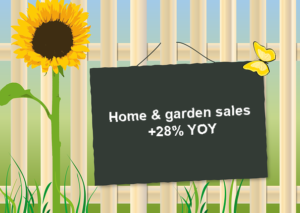
At the end of the 140-day period in August, home and garden e-commerce sales were up 28% when compared to the equivalent timeframe during the previous year. Jake Chatt, Nosto’s Head of Brand Marketing explains, “With many consumers expecting to be at home more, even after lockdowns have lifted, they are happy to spend more money online to improve their living space and make it more comfortable. And with vacation travel also not a possibility for many, people may also have been tempted to divert that spending toward purchases for their homes.”
Fashion and accessories remained strong also with sales in early August 10% higher (YoY). Daily visits grew 15%, daily sales were up 18%, and conversion rates up 12% from March 1st through August 1st. Meanwhile, the AOV in fashion and accessories is down 6% from the start of the pandemic. Even though shoppers are browsing and buying clothes online more than before, they are not splurging or opting for more expensive purchases.
“The increases in traffic, sales, and conversion rate are good news—but they are far from enough to counteract the negative effects of brick and mortar stores being shut down for months,” said Chatt. “With consumers hungry for online and onsite experiences, fashion and accessories e-commerce brands have to grasp the opportunities to optimize these experiences, drive results, and truly become digital-first.”
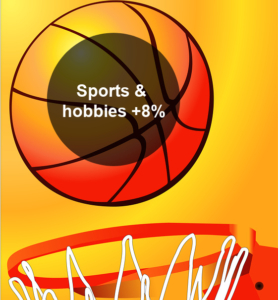
Several other highlights showed areas of relative e-commerce strength:
- Food and drink and sports and hobbies both saw traffic level out by the end of the period whereas animal and pet supplies, home and garden, and fashion and accessories all ended the period with noticeably more traffic than at the beginning (+15% or more increases).
- Food and drink is the only vertical whose sales at the end of the period appeared relatively equal to sales at the beginning of the period at +2%.
- Animal and pet supplies saw exponentially greater growth in their industry conversion rate than any other vertical and sales were +30%.
- Home and garden is the only vertical whose AOV was up at the end of the period (+6%).
Q3 e-commerce losers
It’s not all good news for retailers as the jump in e-commerce sales simply does not make up for the big decrease in brick-and-mortar sales. With many stores closed or having to limit or control customer traffic, in-store sales are likely to continue struggling.
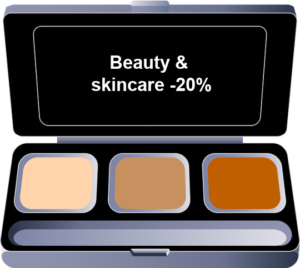
Beauty and skincare products are the big losers from the start of the pandemic with daily traffic down 11%, daily sales down 20%, conversion rate down 5%, and average order value up slightly by 2% from the start of on March.
Traffic and sales in beauty and skincare showed unusual growth in the earlier part of the year after early pandemic restrictions, but have settled back to 2019 levels. At the beginning of August 2020, traffic decreased 6% compared to the beginning of August 2019 and sales had decreased by 15%.
What’s ahead for US holiday shopping?
Not to be flippant but nobody really knows what lies ahead beyond the short term. Some analysts such as Joe Jackman, CEO of Jackman Reinvents, are relatively upbeat about 2020 holiday sales.
Deloitte is predicting total US retail sales of $1.15 trillion during the holiday season up between 1% and 1.5% in November through the end of the year compared to +4.1% last year. E-commerce sales could reach nearly $200 billion up 20% to 25% compared to +14.7% last year.
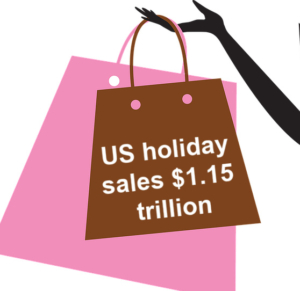
“The lower projected holiday growth this season is not surprising given the state of the economy. While high unemployment and economic anxiety will weigh on overall retail sales this holiday season, reduced spending on pandemic-sensitive services such as restaurants and travel may help bolster retail holiday sales somewhat,” said Daniel Bachman, Deloitte’s US economic forecaster. “E-commerce is likely to be a big winner because consumers have shown a clear movement towards buying online rather than at brick and mortar stores.”
“This year, one of two holiday scenarios will play out. Regardless of the scenario, however, the consumer’s focus on health, financial concerns and safety will result in a shift in the way they spend their holiday budget,” said Rod Sides, vice chairman, Deloitte LLP and US retail and distribution sector leader. “For retailers, this holiday season will continue to push the boundaries on the importance of online, convenience, the role of the store, and the criticalness of safe and speedy fulfillment.”
For its report, Nosto analyzed the performance of 500 online retail brands in the US, UK, France, Germany, Austria, Switzerland, Nordics, and Asia Pacific across six key vertical sectors between March and August this year compared with 2019. You can access a free summary of The State of E-commerce Q3 2020 report here. Deloitte’s holiday season forecast can be viewed here.

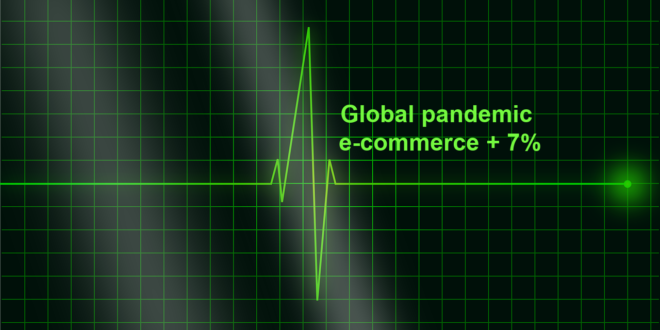






LET’S CONNECT